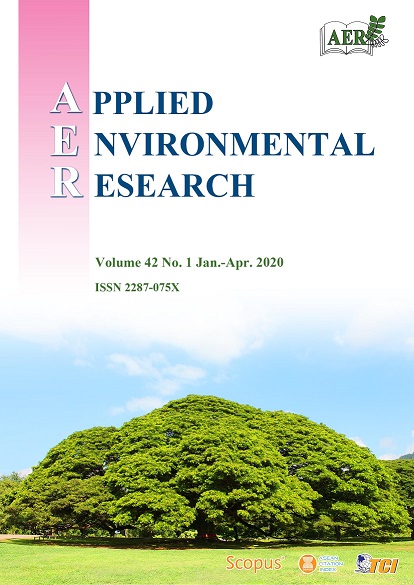Evaluating Current Water Quality Monitoring System on Hau River, Mekong Delta, Vietnam Using Multivariate Statistical Techniques
Main Article Content
Abstract
This study aims to assess the sampling sites and frequencies of sampling of the existing surface water quality monitoring on Hau River using multivariate analysis techniques. Principal Component Analysis (PCA) and Cluster Analysis (CA) were used to analyze the water quality monitoring data collected every month in 2018 from 8 sampling stations. Surface water quality parameters including pH, temperature, dissolved oxygen (DO), total suspended solids (TSS), nitrate (N-NO3-), phosphate (P-PO43-), chemical oxygen demand (COD) and coliforms were used in the PCA and CA analyses. The findings indicated that the Hau River water quality was polluted by TSS, COD and coliforms in which COD was high in dry season, TSS was high in wet season and coliforms were high all year round. The PCA revealed that pH, temperature, DO, TSS, N-NO3-, P-PO43-, COD and coliforms influenced on the water quality, therefore, relevant for examination in the water samples. These water quality variables were affected by various polluting sources, for examples, runoff, human activities, and hydrological influence. Cluster analysis suggested that the current monitoring program could be reduced from 8 to 3-4 points and 12 to 3-4 times per year. This monitoring program could save the total budget for up to 42%. The findings of the present study could be useful to the policy maker especially to those who are dealing with surface water monitoring systems. The multivariate statistical techniques could be used to assess the surface water quality monitoring network.
Article Details

This work is licensed under a Creative Commons Attribution-NonCommercial 4.0 International License.
Published articles are under the copyright of the Applied Environmental Research effective when the article is accepted for publication thus granting Applied Environmental Research all rights for the work so that both parties may be protected from the consequences of unauthorized use. Partially or totally publication of an article elsewhere is possible only after the consent from the editors.

